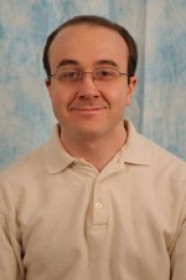
PhD Thesis Defense
November

3:30 pm to 12:00 am
Event Location: NSH 1305
Abstract: Across many rescue, surveillance, and scientific applications, there exists a broad need to perform wide-area reconnaissance and terrain surveys, for which unmanned aerial vehicles (UAVs) are increasingly popular. This thesis considers the task of using one or more UAVs to locate an object of interest, provide continuous viewing, and rapidly re-acquire tracking should it be lost for any reason.
For the common class of small field-launched UAVs considered, this is a difficult task due to a small sensor field of view, highly uncertain estimates of UAV pose, and limited maneuverability, requiring constant processing of observations and recomputation of flight paths to best find the object or keep it in view. Existing strategies for accomplishing this provide poor estimates of the object’s location and rely on grossly heuristic or computationally intensive trajectory generation for both pursuit and search.
This thesis proposes careful representation of observation uncertainty and exploitation of environmental structure — with particular focus on road networks typical of urban-like areas — as means to simplify and better model the problem. For the case of actively tracked objects, greatly improved location estimates are demonstrated through filter representations designed for high-uncertainty observations, as is increased pursuit performance by modeling terrain-constrained space reduction in object location and motion. Objects having no or only roughly known prior location require an initial search, for which both classical Bayesian probabilistic search (for stochastically-modeled moving objects) and novel road network coverage strategies (for stationary or slow-moving objects) are considered. Finally, this is extended to search and local recapture of evasive adversaries in road networks through novel mappings of pursuit-evasion tactics that are well-studied in abstract or ground-based domains but have yet to see use in physical, particularly aerial, applications.
Estimation and tracking aspects have been validated in extensive field trials using widely-fielded air vehicles, and other components have been evaluated in realistic simulation using similarly parametrized vehicle models and control interfaces, laying the groundwork to directly apply the demonstrated algorithms on real aircraft.
Committee:Sanjiv Singh, Chair
Benjamin Grocholsky
Maxim Likhachev
Paul Scerri
Thanasis Kehagias, Aristotle University, Greece